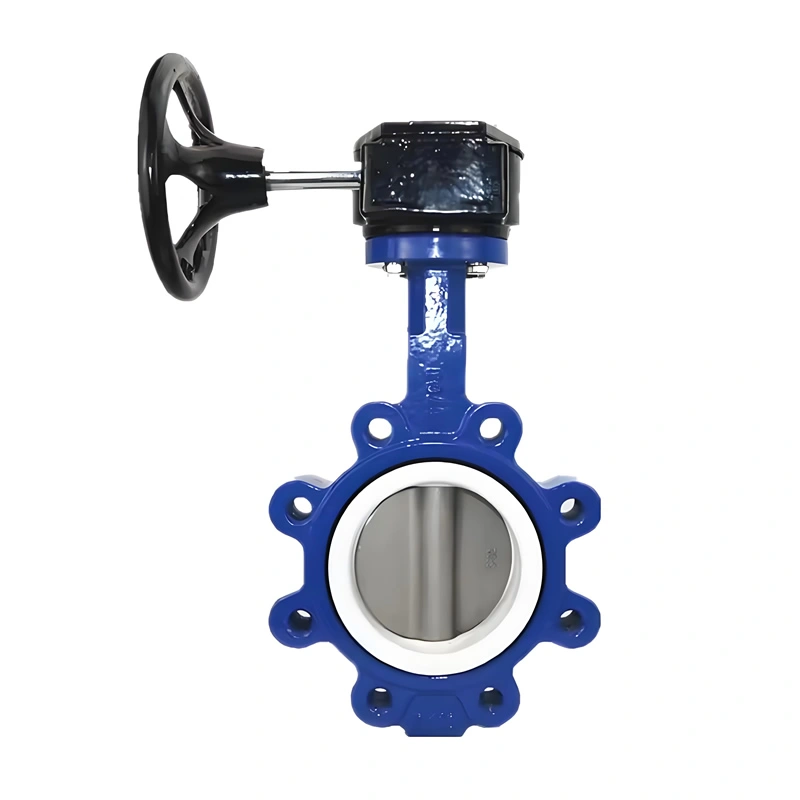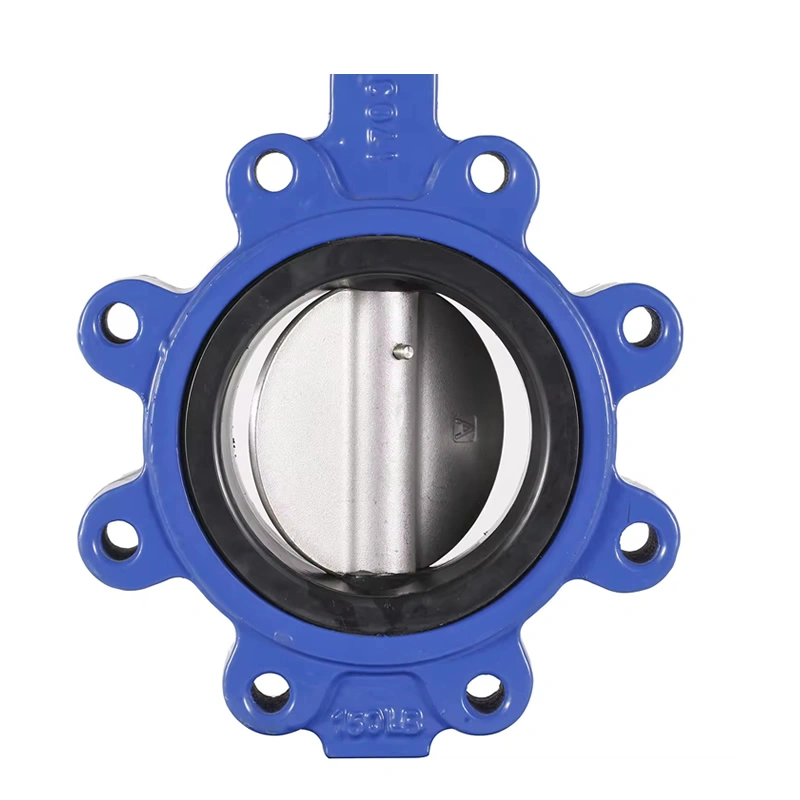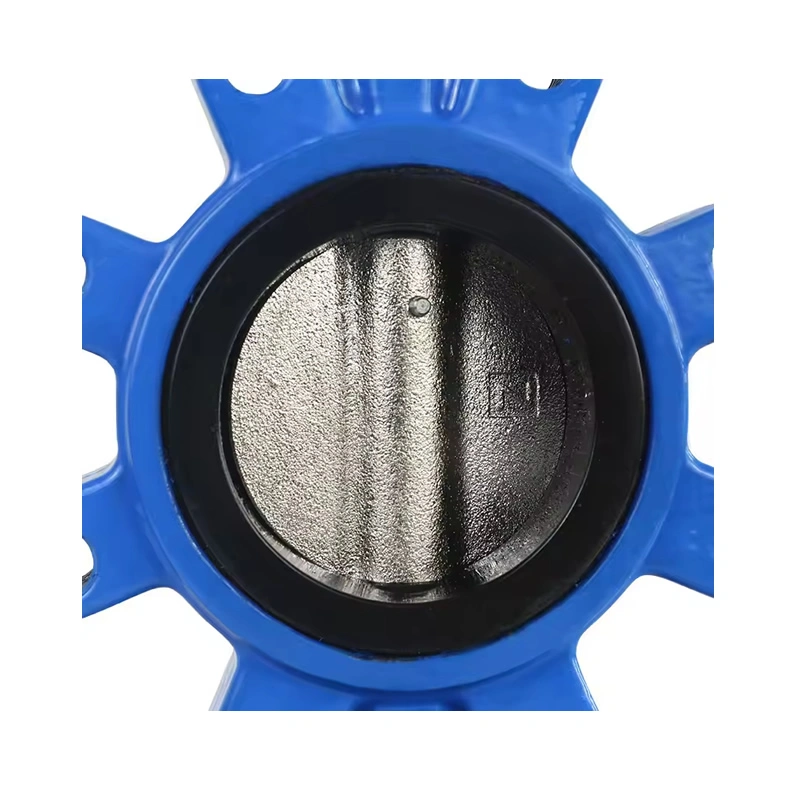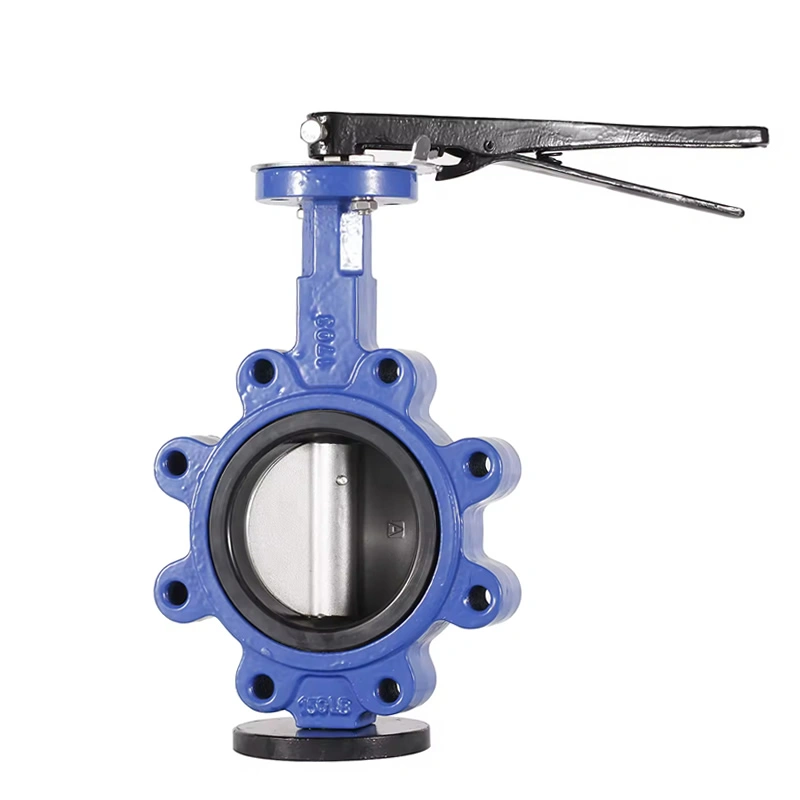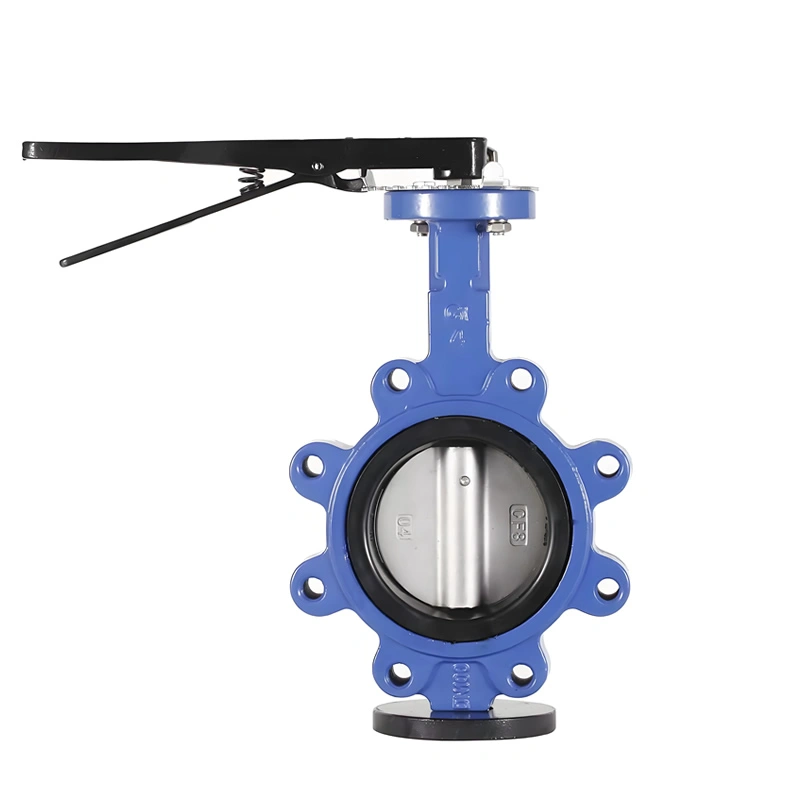- DN50-DN1200
- General
- Water
- Low Temperature
- DI;CI
- DN50-DN1200; 2″-48″
- Normal Temperature
- NBR /EPDM /PTFE
- Lug type butterfly valve
- ANSI BS DIN JIS Ect
- ISO9001,CE,WRAS.ACS
Specification
Newway High-Performance API609 Lug Type Manual Butterfly Valve: A Standard Solution for Industrial Fluid Control
I. Product Technical Positioning and Core Parameters
The Newway high-performance lug type manual butterfly valve is designed in strict compliance with API609 standards, covering nominal diameters from DN50 to DN1200 (2″ to 48″) and suitable for pressure classes PN10/PN16 (1.0/1.6MPa). It features a concentric central line structure (with the stem, disc, and pipeline axis coaxial), using 304 stainless steel (CF8) or ductile iron (DI) as the main materials, and is fixed to pipelines via lug type connections. Driven by a manual operating handle as standard (with optional worm gearbox upgrades), it is suitable for media such as water, air, and oil within the temperature range of -20°C to 120°C, particularly for medium-low pressure applications in municipal water supply/drainage, industrial circulation systems, and building HVAC.
II. Analysis of Core Technical Features
(A) Advantages of Lug Type Structure and Concentric Design
Installation and Maintenance Convenience:
The lug-type valve body comes with built-in mounting holes, fixed by through-bolts to prevent axial displacement during pipeline flange clamping—ideal for vibration-prone environments (e.g., pump inlets/outlets). Compared with wafer-type structures, maintenance efficiency is increased by 40% as pipeline disassembly is unnecessary.
Low-Resistance Flow Performance:
The concentric layout keeps the disc parallel to the fluid direction when fully open, with a flow coefficient Cv≥1200 (pressure loss of DN100 valve ≤0.2m water column). Large-diameter models (e.g., DN600) enable high-flow 输送 of 1.2m³/s, meeting urban water main requirements.
90° Precise On-Off Control:
The manual operating handle is equipped with a mechanical limit device, ensuring an on-off angle error ≤1°. The handle position corresponds directly to the opening degree, reducing misoperation risks in scenarios requiring visual status monitoring.
(B) Sealing System and Material Science
Soft Sealing Technology System:
Seal Material Combinations: Standard configurations include EPDM (drinking water certified), NBR (oil-resistant), or PTFE (corrosion-resistant), passing bi-directional bubble-tight zero-leakage tests (EN12266 Class A) with a leakage rate ≤5×10⁻⁸m³/s.
Seat Design: Adopts a dovetail groove fixing structure for online replacement when worn, eliminating the need for complete disassembly and reducing maintenance costs by 35% compared to hard-seal valves.
Body Material Weatherability:
304 Stainless Steel (CF8): Tensile strength ≥515MPa, resistant to chloride ions (≤200ppm), suitable for seawater desalination, food & pharmaceutical applications;
Ductile Iron (QT450-10): Elongation ≥10%, impact energy ≥27J at -20°C, surface coated with epoxy resin (thickness ≥200μm) for municipal sewage pipelines.
(C) Drive and Mechanical Structure Optimization
Manual Operation System:
The handle is forged from 45# steel with a galvanized surface, requiring ≤50N·m torque for DN100 valves—operable by a single person. The handle connects to the stem via involute splines (fit tolerance H7/g6) to prevent axial movement.
Shaft System Strengthening Design:
The stem uses 2Cr13 stainless steel with surface nitriding treatment (hardness HV≥700), paired with PTFE bronze bearings to withstand over 100,000 opening-closing cycles. The stem seal employs V-type PTFE packing + O-ring double protection, passing 1.5x nominal pressure tests with no external leakage.
III. Key Technical Parameters and Certifications
|
Parameter Category |
Technical Indicators |
Expansion Options |
|
Nominal Diameter |
DN50-DN1200 |
Custom DN1400-DN2000 (engineering evaluation required) |
|
Pressure Class |
PN10/PN16 |
Upgradable to PN25 (2.5MPa) |
|
Body Material |
304 stainless steel/ductile iron |
316L stainless steel, duplex steel 2205 (for severe corrosion) |
|
Sealing Standard |
EN12266 Class A |
API 607 fire certification (metal seal redundancy design) |
|
Testing Standard |
API 598 (1.5x shell hydrostatic/1.1x sealing test) |
Low-temperature testing (-40℃, material upgraded to 304L) |
|
Certification System |
CE, ISO 9001, WRAS, ACS |
LR/DNV-GL classification, NSF61 (drinking water) |
Product Overview
IV. Manufacturing Processes and Quality Control
(A) Precision Processing Flow
Valve Body Casting and Treatment:
Ductile iron valve bodies use lost foam casting, annealed at high temperature to relieve stress, with graphite spheroidization rate ≥90%. Internal flow paths are milled by CNC machining centers to a roughness of Ra≤6.3μm;
304 stainless steel valve bodies adopt investment casting, with surface pickling and passivation to ensure compliance with intergranular corrosion tests (ASTM A262 E method).
Disc and Seat Assembly:
The disc undergoes dynamic balance testing (residual unbalance ≤10g·cm), and the seat-to-body interference fit clearance is controlled at 0.02-0.05mm. Each valve must pass 1.5x nominal pressure shell testing (30-minute hold) and helium sealing tests (leakage rate ≤1×10⁻⁴mbar·L/s).
Full-Process Quality Traceability:
Key components (body, stem, disc) are accompanied by heat lot numbers and chemical composition reports, supporting third-party PMI testing. Finished products must pass 100 cycle opening-closing tests with torque decay ≤15%.
(B) Certification and After-Sales Assurance
International Compliance: Certified to EU CE-PED, UK WRAS (drinking water), and French ACS (food contact), meeting 准入 requirements for different regions;
After-Sales Commitment: Provides an 18-month warranty period, with free replacement for leakage due to seal failure or structural issues, and lifelong technical support.

